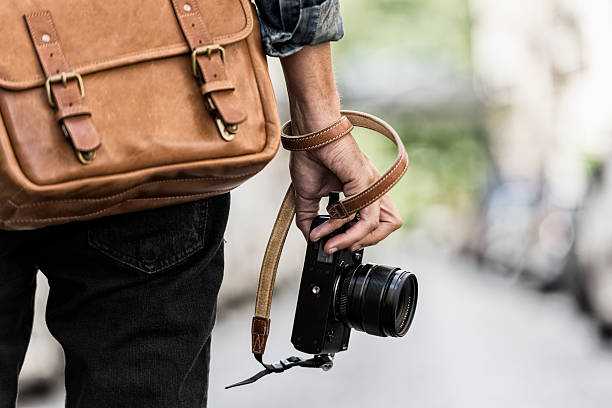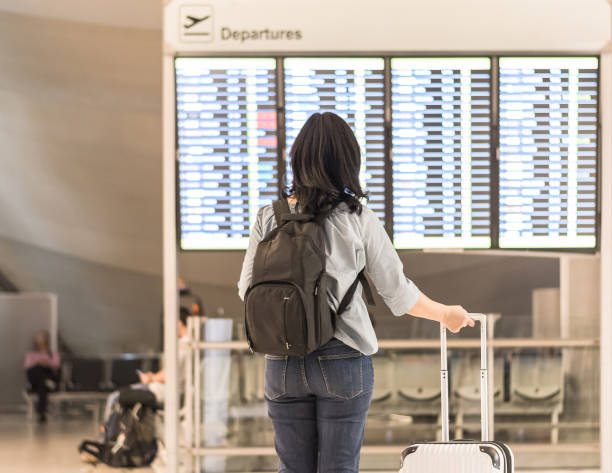10 PHOTOS YOU SHOULD BE TAKING WHEN YOU FLY | FLIGHTLAYAWAY
Photos are a great way to capture unforgettable moments when you travel, serving as proof that you really were there. But they can also serve as proof in cases where things don’t go quite so well on holiday.
After snapping a picture in
your comfy travel outfit we’ve got 10 photos you’ll want to add to your camera
roll when you fly. Because if things don’t go quite as planned like if you’re
hit with a flight delay or your luggage is lost, these photos can support a
claim for compensation or reimbursement from the airline.
Because like they say: if
you didn’t take a photo, did it actually happen?
Every
time you fly…
Take a photo of your luggage
at check-in
Pics of what’s in your bag
Get a close up of any valuables
Make a quick snap of your
baggage tag
Grab a shot of you at the
gate
Snap a photo of your
boarding pass
When
something goes wrong…
Capture your food and drink
receipts on film
Get a snapshot of yourself
waiting on the tarmac
Take copies of extra expenses
Every
time you fly…
1.
Photo of your luggage at check-in
Why? If your bag gets
damaged as it travels from A to B, a picture taken just before you handed it
over to the airline will prove that you’re not trying to claim for previous
damage.
Photo tip: Make sure to take
photos of your bag from all angles.
The luggage carousel slowly makes it's way around and you finally see your bag coming towards you. But something doesn’t look right. Because you took a photo of your luggage before handing it over, you have visual proof to back up your claim that your bag was returned in worse condition.
Take a photo of the damage
then head to the airline customer service with your boarding pass and baggage
tag. You must fill out a damage claim form before leaving the airport. Certain
airlines may allow you to file a claim at a later date but it’s important to
check the airline’s policy before leaving the airport. Otherwise, you may miss
out on compensation for your damaged luggage.
Christopher Elliott, of the
non-profit Elliott Advocacy, which provides advice and advocates for consumers,
says for the best outcome when filing a claim:
“Paperwork is critical. If
you don’t fill out the form within a certain amount of time, your claim will
automatically be denied. I’ve dealt with many cases where the claim was denied
after a traveler waited too long.”
2.
Pics of what’s in your bag
Why? If the items inside of
your suitcase are damaged or lost in transit these photos act as an itemization,
and proof, of what’s in your bag.
Photo tip: No item is too
small, if you’d be upset if it was damaged or lost, make sure it’s in a photo.
If the outside of your
luggage has been damaged it’s possible that the items on the inside have too.
While you’re packing take detailed photos of what you put inside your suitcase
in case something gets damaged or lost.
3. Close up of any valuables
Why? If you have to leave
high-priced items in your checked bag, you want to be extra sure you can prove
they were in pristine condition – and appropriately packed – in case they are
damaged in transit.
Photo tip: Take photos of
the item by itself and again once you have it in its protective packaging.
We always advise you to
carry valuables with you onto a plane. But sometimes carry-on size restrictions
mean you have no choice but to leave some important items in your checked
luggage. Before handing over your Faberge egg or other cherished belongings,
take photos of the valuables you pack in your suitcase. Photograph them again
once they’re wrapped up so there’s no question that you took the appropriate
steps to protect them.
Keep in mind that if
something goes missing or gets damaged there’s a limit to how much you can
claim. You can increase the amount you’re eligible to claim up to $5,000 by
paying an ‘excess value fee’ to the airline when you check in your bags. But if
you are traveling with precious goods, consider opting for travel insurance to
make sure you are covered in the unfortunate situation that they are damaged or
lost.
4.
Quick snap of your baggage tag
Why? Baggage tags are too
easily lost or thrown away, but they are vital if something goes wrong with
your luggage.
Photo tip: Make sure all
text and numbers on the tag can be clearly read in the photo.
After you hand over your
suitcase at the check-in counter, airline staff will give you a baggage tag.
The baggage tag specifies who the bag belongs to, where it’s headed, and tracks
where it goes.
Before you walk away take a
quick photo of your baggage tag.
With this luggage tip, you
can easily pull up the photo in your phone if you lose the tag or simply want
to avoid rummaging through your bag to look for it. It is vital to have the
information from your baggage tag if you ever need to file a claim with the
airline.
5. A shot of you at the gate
Why? If you end up being
denied boarding you can prove that you got to the gate in plenty of time.
Photo tip: Feature your
watch or have your timestamp switched on when you take the photo.
You’ve made it through
airport security and to your boarding area with plenty of time to spare. That’s
as good a time as any to take an airport selfie. Not just to post on social
media with the caption #travelholic but as proof that you arrived at the gate
on time.
6. A snap of your boarding pass
Why? This easily lost slip
of paper is often a must-have piece of the puzzle you’ll need to create a claim
with the airline.
Photo tip: It is important
that all of the text is clear in the photo.
For many airlines, your
boarding pass is a crucial item needed to process any compensation claim. Even
if you received a paper version from the airline or printed it at home, take a
photo of your boarding pass and save it with the rest of your documentation.
If you’ve opted for a mobile
boarding pass save it to your phone or grab a screenshot of it. (The apps don’t
store them forever.)
When something goes wrong…
7.
If you’re stuck at the airport: Capture your food and drink receipts on film
Why? If your flight is delayed for an extended amount of time, you may be eligible for reimbursement for the food and drinks you needed during the wait.
Photo tip: Make sure that
the amount of money spent as well as the date and time is visible on the
receipt when you photograph it.
Just as you check the
airport screens to see where your flight is boarding the flight status switches
to delayed. This delay could leave you stuck at the airport for hours or even
force you into an overnight stay. This means you’re going to have to hit up
airport restaurants and cafes for something to eat.
You can easily keep track of
the food and drinks you purchase by taking photos of the receipts. Follow this
airport tip if you’re delayed while traveling on a U.S. airline because in some
situations you can get reimbursed for your eatery expenses.
But did you know that when particular flight issues like delays occur, you could be eligible for flight delay compensation from the airline? At Flightlayaway we make it our mission to help passengers understand their rights.
8. If you’re stuck on a plane: Snapshot how long you’ve been waiting
Why? There are laws
prohibiting how long planes can be held on the tarmac, if you’re not allowed to
deplane within that time frame (unless there are security concerns) you could
be eligible for compensation.
Photo tip: Make sure that
you include an item that displays the time in the photo to show how long you’re
held on the plane.
You’ve settled in with your
seat belt fastened but air traffic control hasn’t given the go-ahead for your
flight to take off. Document how long you’re left waiting on the tarmac by
taking a time-stamped photo on the plane.
Due to U.S. law passengers
flying with U.S. airlines must be allowed to deplane after waiting on the
tarmac for 3 hours. On EU airlines, the length on the tarmac before the
passengers should be allowed to exit is 5 hours. Learn more about your rights
when it comes to tarmac delays.
9. If your flight issue is
going to cost you money: Copies of extra expenses
Why? When flying
internationally, airlines are responsible for reimbursing passengers when they
incur additional expenses as a result of a disrupted flight.
Photo tip: Be sure to
indicate that the date and time of these changes occurred during your flight
disruption.
Whether you have to buy
toiletries because your bag didn’t arrive on time or you’re missing out on
prepaid activities because your flight arrived too late, snap a photo of those
receipts. Under the Montreal Convention, you can file for reimbursement of
additional expenses in certain situations when your trip is disrupted at the
fault of the airline.
So, add the receipts for the
sightseeing tour and other pre-paid activities to your camera roll to document
your expenses. You should also hold on to the paper version to be on the safe
side.













Comments
Post a Comment